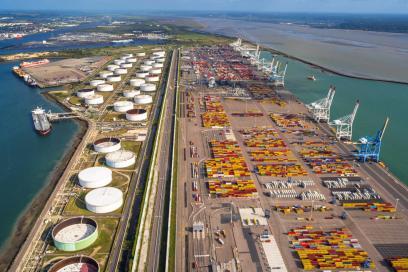- ABOUT US
- GOODS
- A multi-sector focus
- A maritime service offering in the first rank
- An attractive multimodal offering
- An expanded shortsea service offering
- Terminaux portuaires et quais à usage partagé
- High-quality ship services
- Fluid, facilitated goods throughput
- A port that puts its performance figures in the public domain
- PASSENGERS
- MULTIMODALITY
- ECOLOGICAL TRANSITION
- INNOVATION
What is a digital twin?
A digital port twin is a virtual, digital representation of a port in the real world, including its infrastructure, equipment, processes and operations. This technology uses real-time data, sensors and 3D models to create an accurate digital copy of the port.
What is it used for?
The main purpose of a digital port twin is to simulate and monitor various aspects of port activity in real time:
- maritime traffic;
- the nature of the vessel;
- nautical and meteorological conditions;
- cargo management (volume, type of cargo, etc.);
- logistics;
- safety;
- available workforce;
- condition of structures and infrastructure.
By using the digital twin, a port can anticipate and improve the operational efficiency of port calls and optimize the management of the associated resources required.
It also helps to reduce the energy consumption associated with port activities and contributes to a reduction in environmental impact. Indeed, by facilitating the concept of "just-in-time" calls, the entire port chain reduces its energy consumption and greenhouse gas emissions.
